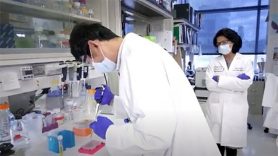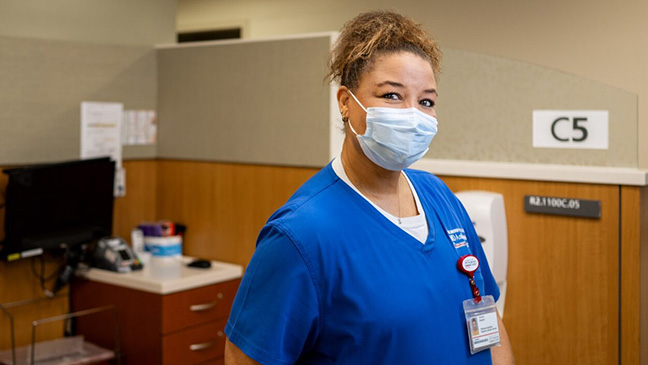Unveiling MD Anderson's organizational Strategy
- Diseases
- Acoustic Neuroma (14)
- Adrenal Gland Tumor (24)
- Anal Cancer (68)
- Anemia (2)
- Appendix Cancer (16)
- Bile Duct Cancer (26)
- Bladder Cancer (72)
- Brain Metastases (28)
- Brain Tumor (230)
- Breast Cancer (720)
- Breast Implant-Associated Anaplastic Large Cell Lymphoma (2)
- Cancer of Unknown Primary (4)
- Carcinoid Tumor (8)
- Cervical Cancer (158)
- Colon Cancer (166)
- Colorectal Cancer (114)
- Endocrine Tumor (4)
- Esophageal Cancer (44)
- Eye Cancer (36)
- Fallopian Tube Cancer (8)
- Germ Cell Tumor (4)
- Gestational Trophoblastic Disease (2)
- Head and Neck Cancer (8)
- Kidney Cancer (128)
- Leukemia (344)
- Liver Cancer (50)
- Lung Cancer (288)
- Lymphoma (284)
- Mesothelioma (14)
- Metastasis (30)
- Multiple Myeloma (100)
- Myelodysplastic Syndrome (60)
- Myeloproliferative Neoplasm (4)
- Neuroendocrine Tumors (16)
- Oral Cancer (100)
- Ovarian Cancer (174)
- Pancreatic Cancer (164)
- Parathyroid Disease (2)
- Penile Cancer (14)
- Pituitary Tumor (6)
- Prostate Cancer (146)
- Rectal Cancer (58)
- Renal Medullary Carcinoma (6)
- Salivary Gland Cancer (14)
- Sarcoma (238)
- Skin Cancer (296)
- Skull Base Tumors (56)
- Spinal Tumor (12)
- Stomach Cancer (64)
- Testicular Cancer (28)
- Throat Cancer (92)
- Thymoma (6)
- Thyroid Cancer (96)
- Tonsil Cancer (30)
- Uterine Cancer (80)
- Vaginal Cancer (16)
- Vulvar Cancer (20)
- Cancer Topic
- Adolescent and Young Adult Cancer Issues (20)
- Advance Care Planning (10)
- Biostatistics (2)
- Blood Donation (18)
- Bone Health (8)
- COVID-19 (362)
- Cancer Recurrence (120)
- Childhood Cancer Issues (120)
- Clinical Trials (632)
- Complementary Integrative Medicine (24)
- Cytogenetics (2)
- DNA Methylation (4)
- Diagnosis (232)
- Epigenetics (6)
- Fertility (62)
- Follow-up Guidelines (2)
- Health Disparities (14)
- Hereditary Cancer Syndromes (126)
- Immunology (18)
- Li-Fraumeni Syndrome (8)
- Mental Health (118)
- Molecular Diagnostics (8)
- Pain Management (62)
- Palliative Care (8)
- Pathology (10)
- Physical Therapy (18)
- Pregnancy (18)
- Prevention (914)
- Research (398)
- Second Opinion (74)
- Sexuality (16)
- Side Effects (608)
- Sleep Disorders (10)
- Stem Cell Transplantation Cellular Therapy (216)
- Support (402)
- Survivorship (322)
- Symptoms (184)
- Treatment (1790)
The day we launched our Strategy
BY Danielle Hay
2 minute read | Published December 20, 2021
Medically Reviewed | Last reviewed by an MD Anderson Cancer Center medical professional on December 20, 2021
When I woke on the morning of Jan. 28, 2021 — the day we launched our organizational Strategy — it felt surreal. We had spent so much time creating this blueprint for MD Anderson’s future and, finally, it was time to share it. I was both excited and nervous.
The Strategy was years in the making.
MD Anderson President Peter WT Pisters, M.D., had challenged us to devise a strategy for MD Anderson’s future, seeking input from employees across the organization. In spring 2019, our team started doing just that. We asked employees: What does the future of MD Anderson look like?
Through feedback from frontline staff and conversations with leaders, we ultimately settled on three themes: Reach, Breakthroughs and Value. We wanted to make it easier for patients and communities to access our expertise. We wanted to drive high-impact discovery research and accelerate translation to treatments. We wanted to set new standards for high-touch, high-value cancer care.
And the overarching goal? To increase MD Anderson’s impact on humanity.
When I drove to the office that January day, it was still dark. We actually had two launches. We had our internal launch to employees in the morning and our president, Dr. Peter WT Pisters, shared our Strategy with the MD Anderson’s Board of Visitors in the afternoon.
One of our goals was to ensure all 22,000-plus employees felt connected to the Strategy. Before I came to Strategy and Business Development, I worked in Diagnostic Imaging. I knew that there were people at MD Anderson who would have to take the larger institutional vision and translate it to their teams. As we developed the Strategy, my team members and I would often ask ourselves: Would this make sense to me if I had a completely different role at the institution? If I worked in another department, would the Strategy inspire me?
And the answer to both questions is: Yes.
What’s most striking about the Strategy is that it feels ambitious, but at the same time it feels intuitive to MD Anderson. It feels like us.
Danielle Hay is executive director, Strategy and Business Development at MD Anderson.
Request an appointment at MD Anderson online or by calling 1-833-493-2106.
Related Cancerwise Stories

It feels like us.
Danielle Hay
Executive Director, Strategy and Business Development






